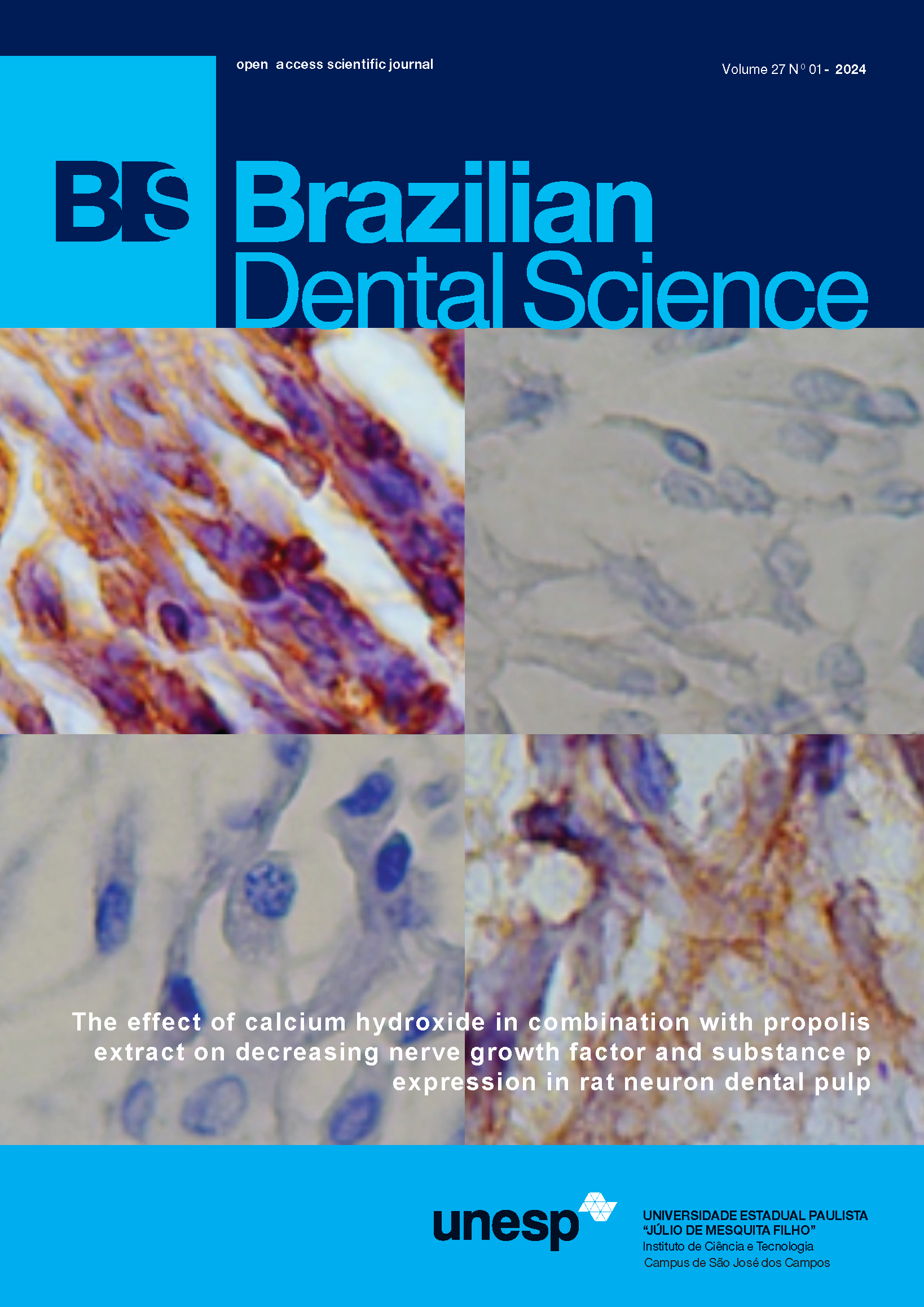Assessment of the opening diameter of the incisive foramen as a parameter for gender and age estimation
DOI:
https://doi.org/10.14295/bds.2017.v20i4.1458Abstract
Objective: To analyse the opening diameter of incisive foramen as a parameter for gender and age estimation by using cone beam computed tomography (CBCT). Material and Methods: After approval by the local research ethics committee, CBCT images were obtained from the dental database of a diagnostic centre and then selected. Images suggesting presence of periapical lesions and periodontal changes were excluded, as well as those of patients undergoing orthodontic treatment, with trauma to the mid-facial third, with cleft/lip palate, cranial or syndromic morphological changes, or even absence of one of the upper incisors. The images of male and female patients were distributed according to age groups (i.e. 10-30 years, 31-50 years, and 51 years or older) and then assessed twice and independently by three surgeon-dentists with experience in radiology by means of the XoranCat® software. The resulting data were tabulated and statistically analysed by using the SAS® software (version 2003) – PROC GLM for mixed generalised models – and Tukey’s test for comparison of the mean values at 5% significance level. Results: Considering the methodology used, the results have demonstrated no statistically significant difference in the method for gender estimation. However, it was observed that there was a gradual increase in the mean values as the age advances in the majority of the age groups for both males and females, with a statistically significant difference (P<0.05) regarding age estimation. Conclusion: The use of incisive foramen as a gender parameter has had a limited forensic value, but it is an innovative approach in the process of age estimation.
Keywords
Dentistry; Human identification; Anatomy; Computed tomography.




